A Comprehensive Guide To Focus Groups In Market Research
This practical guide covers methodology, best practices, and common mistakes to avoid when conducting consumer focus groups in market research.

Similar cases:
What is quantitative market research in marketing?Understanding Research MethodologiesFocus groups in market research projects are not a new concept, and have been successfully used for decades. Even today, in this fast-paced digital-led world, these groups are still a powerful tool that helps to reveal the motivations, emotions, and perceptions of customers.
Focus group methodology provides researchers with a direct window into how people think, feel, and discuss brands, products, and experiences. Using this information can help shape your strategy long before the numbers do, and we thought we would use this latest guide to take you through every step of the process, helping you maximize your results.
What are focus groups in market research?
Focus groups in market research are moderated discussions that involve a small group of participants, typically around six to ten people at a time, who share their personal opinions, attitudes, or experiences around a specific topic. These groups are normally led by a trained facilitator, who is able to manage personalities and keep the conversation on track and relevant.
The conversations that participants have in these groups are designed to explore how consumers think and feel, rather than simply what they do. When it comes to market research, focus groups are commonly used:
In marketing, focus groups are commonly used to:
Test new product concepts or advertising campaigns.
Explore brand perceptions and emotional responses.
Uncover unmet needs or hidden motivations.
Evaluate customer experiences or purchase journeys.
Unlike quantitative methods, focus groups are not about measuring results. They’re about understanding perspectives, and by listening to real people talk in their own words, researchers gain the kind of nuanced insight that can guide smarter, more empathetic decisions.
Why should you still use focus groups in 2025?
Consumer focus groups remain a cornerstone of market research for a reason: They bring human texture to data-driven research. When done correctly, consumer focus groups are able to provide valuable insights that you simply cannot get anywhere else, including:
Allow you to hear ‘real’ language
When you use focus groups in market research, you will be hearing real users speaking in real language. That means they will be naturally describing their experiences and frustrations, allowing you to refine your messaging and product positioning accordingly.
Spot emotional triggers
Group dynamics help to not only reveal what people are thinking but also how they are feeling – and how others are helping to influence that.
Test reactions
Employing focus group methodology early into the development cycle will allow you to enjoy rapid feedback before having to invest heavily in campaigns or prototypes that might not meet the demands of your target market.
Identify unknown factors
Another major benefit of focus groups is their ability to highlight unexpected ideas or issues that you might not have realised and that structured surveys might miss.
Understanding focus group methodology
Focus groups work best in the exploratory stages of focus group methodology, where marketers want to gather ideas, perceptions, and direction before committing to large-scale quantitative validation. In this market research focus group guide, we thought it was important to explore how you can keep yours productive, balanced, and aligned with your research objectives…
Define clear objectives
Before recruiting anyone, you should first determine what you want to learn. For example, are you testing product appeal, exploring customer needs, or refining brand language? Whatever it may be, these goals shape every aspect of your discussion guide.
Recruit the right participants
As with all market research techniques, the data is only as strong as the participants, so you need to ensure that your participants accurately represent your target audience. When it comes to focus group best practices, it is wise to incorporate some screening questions to ensure relevance and diversity.
Prepare a discussion guide
Your market research focus group guide acts as a roadmap. It outlines the session flow, key topics, and open-ended questions designed to spark conversation. While structure is important, flexibility allows natural discussion to develop.
Choose a skilled moderator
A moderator is the linchpin of effective focus group methodology. Their role isn’t to lead participants toward answers but to create a comfortable environment where honest opinions flow, and good moderators listen actively, probe gently, and keep dominant voices from overpowering quieter ones.
Record and observe
Sessions can be recorded via audio, video, or online platforms for later analysis. Observers, such as marketers or product teams, can watch discreetly to pick up on nonverbal cues or emotional moments.
Analyze for themes
After the sessions, researchers review transcripts or recordings to identify recurring themes, patterns, and contradictions. Coding responses helps quantify common ideas without losing qualitative richness.
Focus group best practices: The do’s
Running consumer focus groups can be highly rewarding, but your success depends on thorough preparation, effective moderation, and meticulous analysis. Here are some key focus group best practices every researcher should follow…
Do: Start with open, non-leading questions
Begin discussions broadly with questions such as “What comes to mind when you think about this brand?” before narrowing in on specific topics. Open-ended prompts encourage authenticity and prevent bias.
Do: Create a comfortable and neutral space
Participants share more openly when they feel relaxed. So no matter whether it is in person or online, set a tone that’s conversational, not interrogative, while the moderator should remain neutral, avoiding any signals of approval or disapproval.
Do: Encourage diverse participation
Balance is key in focus groups, and a good moderator will ensure that all voices are heard, even from those individuals who may be less confident in group settings. Sometimes, it is the quietest participants who are able to offer the most original insights.
Do: Keep sessions manageable in size and length
An effective focus group methodology favors smaller groups that allow everyone to contribute meaningfully, so you should aim for six to eight participants over 60–90 minutes.
Do: Use stimulus materials when relevant
Visuals, product prototypes, or ad concepts help ground discussions and prompt concrete reactions, and this helps to make it easier for participants to articulate their thoughts.
Do: Be transparent about purpose and confidentiality
Transparency fosters trust and encourages candid responses, so participants should understand why they’re there and how their input will be utilized.
Do: Debrief immediately after the sessionFresh impressions can fade fast, which is why the moderator and observers should debrief immediately after about what stood out, for example emotions, body language, or surprising moments that may not be immediately obvious on playback.
Focus group best practices: The don’ts
Just as important as the do’s are the don’ts, and even experienced researchers can fall into pitfalls that compromise the quality of insights so try and avoid these issues…
Don’t: Overload the discussion guide
Trying to cover too many topics leads to shallow answers, so focus on the few key questions that matter most to your research goal.
Don’t: Let one participant dominate
Group dynamics can skew results if a single strong personality controls the conversation, so moderators must gently redirect and invite others in.
Don’t: Ask leading or biased questions
Avoid phrasing that implies a “correct” answer, such as “Wouldn’t you agree this product feels premium?” Neutral wording is essential to credible results.
Don’t: Ignore nonverbal cues
Gestures, tone, and facial expressions often reveal more than words, which is why observers should ensure that they note these subtleties during or immediately after the session.
Don’t: Rush analysis
Insight doesn’t come from transcripts alone, so take your time to interpret the why behind comments, compare across groups, and validate themes before drawing conclusions.
** Don’t: Treat focus groups as quantitative research**
A common misunderstanding is expecting statistically representative data from small groups. Focus groups reveal depth, not breadth, and they are designed to complement, not replace, quantitative studies.
Final thoughts
Focus groups remain one of the most powerful ways to understand the human side of marketing. When designed with care, moderated with empathy, and analyzed with precision, they deliver insights that numbers alone can’t provide.
This market research focus group guide has shown that successful sessions depend on preparation, thoughtful recruitment, and rigorous analysis. They’re about listening deeply to words, emotions, and context and using that insight to create an actionable strategy.
Frequently Asked Questions
What is the main purpose of focus groups in market research?
Focus groups explore opinions, attitudes, and motivations through group discussion, and they can help researchers uncover the “why” behind consumer behavior, something that quantitative surveys can’t fully explain.
How many people should participate in a consumer focus group?
A typical session includes six to ten participants as this size encourages diversity of perspectives while keeping discussion manageable and interactive.
Can Yasna.ai help me conduct focus groups online?
Not yet. As of now, Yasna only offers 1-to-1 chats with respondents for in-depth interviews. These conversations, however, offer unique advantages to researchers. Such as high quality of moderation, option to conduct video interviews, and more.
Continue reading
Top picks about AI-powered interviewing
Yasna Updates Reporting Feature
Create customized reports by asking simple questions, simplifying data analysis and merging insights.

Yasna Unveils Screening Feature
For Enhanced Respondent Experience and Data Quality Assurance

Yasna.ai Introduces AI Moderator 2.0
Smarter, More Culturally Aware, and Autonomous
